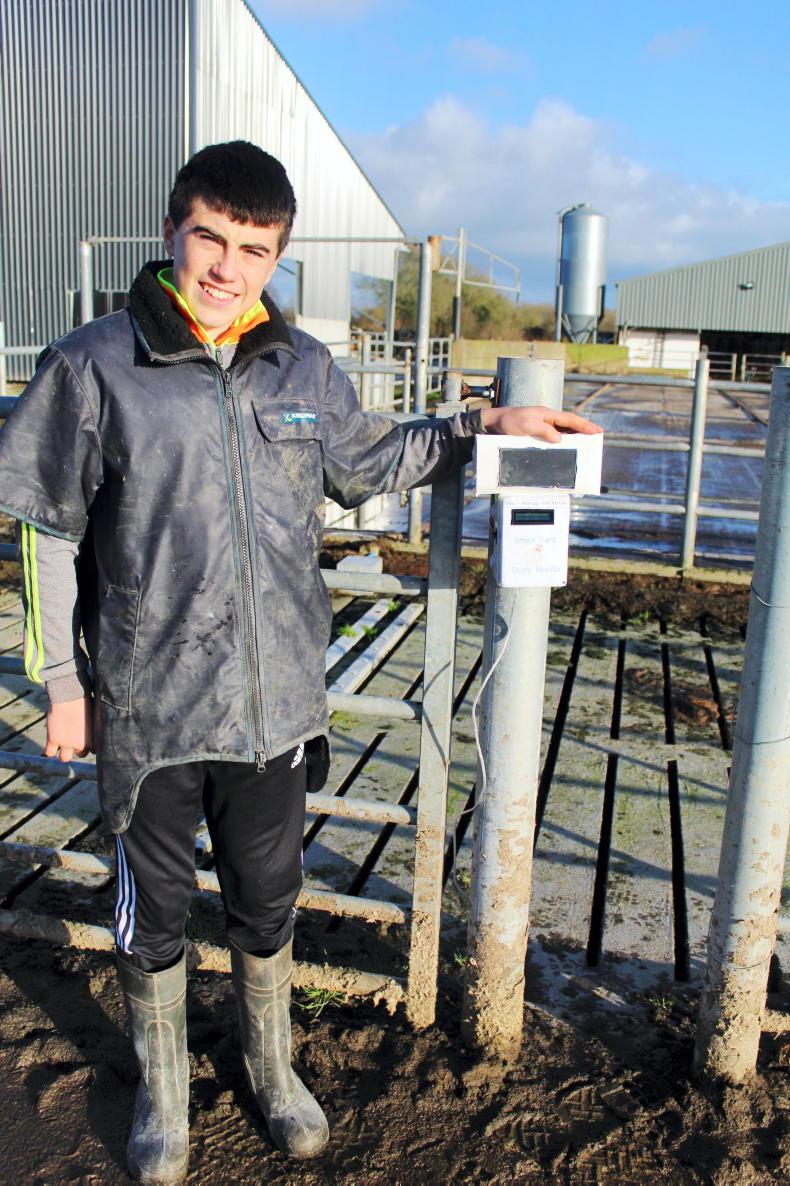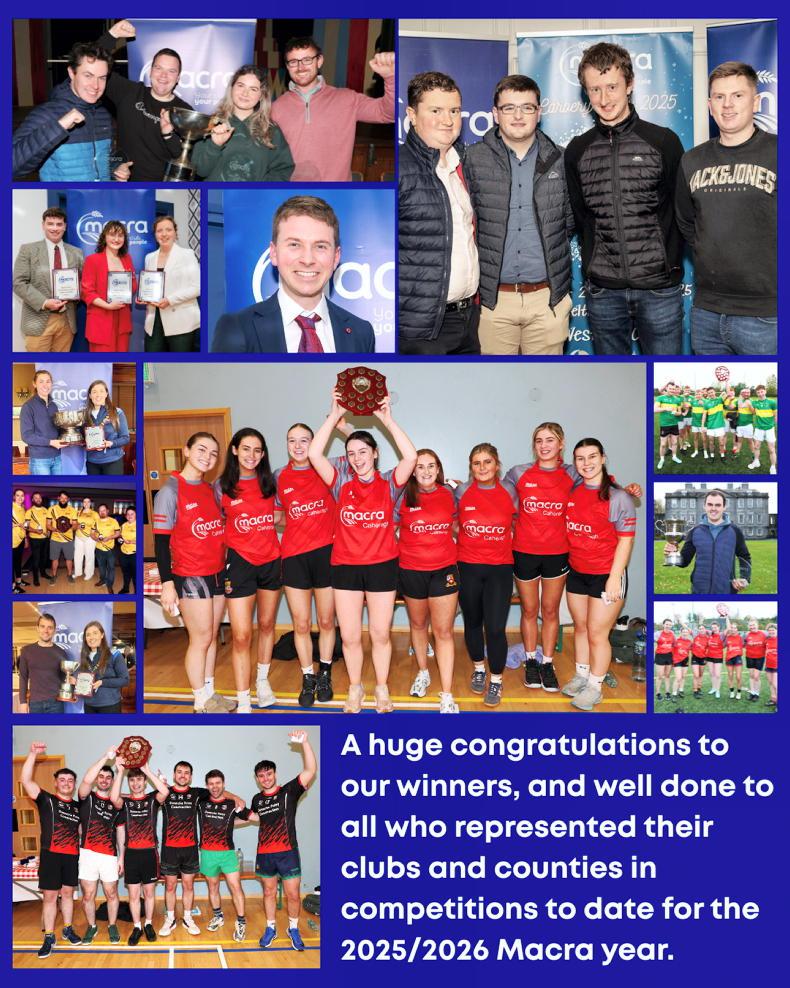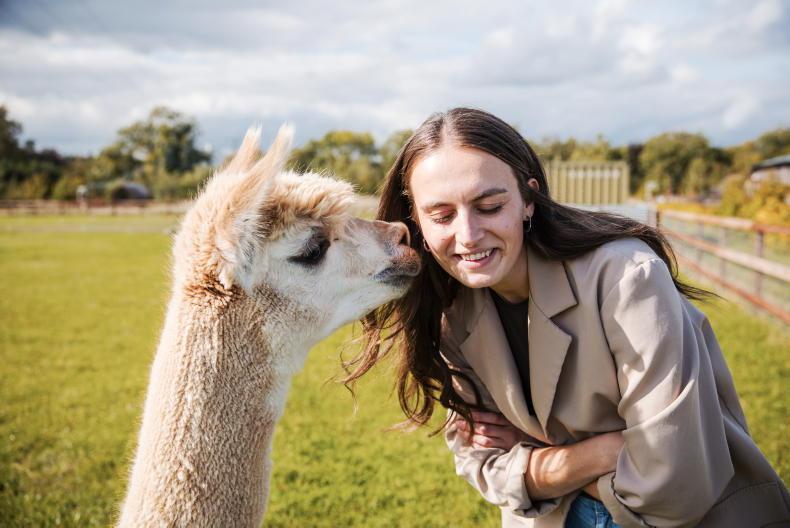Finding potential solutions to current and future issues is no problem for the young scientists who took part in this year’s BT Young Scientists and Technology Exhibition (BTYSTE). With a focus on sustainability and improving agricultural practices, Irish Country Living speaks with three groups whose projects represent the innovative mind-sets of incoming generations.
Clodagh Rochford, Ayla O’Neill and Grace O’Brien (16) all live around Kenmare Bay and attend Pobalscoil Inbhear Scéine.
Clodagh and Ayla both come from a farming background, while Grace says jokingly: “I have a pet farm, not a real farm.”
For their Young Scientists project, the girls chose to investigate whether planting mini seaweed farms would reduce pollution and acidification levels in sea water.
Their project earned second place in the Chemical, Physical and Mathematical Sciences Intermediate Group Category. The project was inspired by Kenmare’s location; nestled in a bay which extends to the Atlantic Ocean.
Grace says: “The sea is a really big part of everyone’s lives here, tourists and locals alike. We wanted to see how we could improve water quality for the people who use the sea every day.”
The process
The group collected water samples from four different piers in Kenmare Bay. Ayla explains: “We had to get four tanks for each of those areas so that the water samples would be separated. We brought in 20 litres of water from each area and then we collected seaweed from the Kenmare Bay. We measured out about 20g of seaweed in each tank.”
Grace adds: “We used bladder wrack seaweed, which is the most popular species in the Kenmare Bay. We didn’t want to use an invasive species because that would mess up the ecosystem here.”
The findings speak for themselves. Clodagh says: “We found out that the planting seaweed does improve the pollution and acidification levels. By planting the seaweed into tanks, the water levels increased closer to 8.1 on the pH scale – which is the ideal level for seawater and also the pollution levels decrease in our sample from Templenoe (pier). It went from 6.4 parts per million (ppm) to 0.92 ppm. This essentially means that it went from what was considered a polluted water quality to drinking water quality.”
More than a project
Ayla, Grace and Clodagh have a keen interest in science and they found great joy in working on their BTYSTE project. Clodagh says, “It was good having a hands-on activity and collecting everything yourself and then doing all the tests yourself.”
Grace adds: “We live next to the sea, so we go on walks down to the pier nearly every day with the school. We walked down there, collected the seaweed and it was just good fun doing it together and working together.”
The Young Scientists are not done with their project yet, as they prepare to extend and improve it for entry it into this year’s Scifest (www.scifest.ie). And maybe, they will use their knowledge to improve water quality in the future.

Robert Troy showcases his slurry sensor box.
Robert Troy (16) from Scoil na mBráithre Chríostaí in Charleville, impressed the BTYSTE judges with his project aiming to measure key farm metrics with an Internet of Things (IoT) system to reduce agricultural emissions. His project got awarded the COMREG Commission for Communications regulation award.
Robert lives on a dairy farm in Newtownshandrum and his project took root during last year’s lockdown. He says: “I was looking for something else to do. I was at home and there were no sports or anything on, so I bought these electronic boards that you could programme easily. I put a counter in the milking machine, as the cows are being milked it counts the number of cows.
“We have a rotary so it’s kind of hard to tell at times how many cows are milked. I realised that maybe I could take this further, so that led to the slurry then.”
The project
With chemical fertiliser prices soaring and the goal to reduce emissions by 22-30% by 2030, Robert identified that we need to make better use of slurry. He says: “The start of this process is knowing the volume in the slurry. I used an ultrasonic sensor with an Arduino MKR FOX 1200 board.
“The ultrasonic sensor sends down a beam to the height of the slurry from the top of the slat and then it gets that distance. It takes that distance away from the total tank height to get the height of the slurry and then it multiplies it by the dimensions in the tank to get the volume.
“Using the board, it sends the volume to the cloud and from there it is taken to the dashboard app where the data is displayed.”
A work in progress
Robert has been testing his Smart Yard at home.
“From late November I tested it in our slurry tank at home and the soil water tank and the results were accurate enough; 2.81 cubic metres was the average difference between what the sensor was reading versus what I was calculating based on a measuring tape and then that was an error of about 0.75%,” he says.
“Working on something for a while and it’s not working, and then you just change one small thing and then it works, that’s what I enjoyed most,” he adds.
For now, Robert will be leaving the ultrasonic sensor in his slurry tank to keep getting the readings and get them even more accurate over time.

Hard at work: Momo Sheehy, Isabelle Linehan and Lucy McCarthy harvest horse manure for their project.
Momo Sheehy, Isabelle Linehan and Lucy McCarthy (16) from Kinsale Community School decided to investigate whether horse manure can be used as a sustainable alternative to peat compost for their BTYSTE project. They were awarded the first prize in the Biological and Ecological Intermediate Group.
With Momo and Lucy both having horses and Isabelle’s love for gardening and planting, the project could not have been in better hands. With the commercial harvesting of peat banned in Ireland, the group realised that horse manure could be a sustainable alternative.
Lucy says: “[Ireland] doesn’t need to have this huge carbon footprint from importing peat compost. I think that was really interesting [about this project] – what we need is just on our doorstep.”
The project
Isabelle explains: “We grew three different varieties of winter vegetables: lettuce, rocket and winter wheat. We grew them in five different growing media, which was our peat compost, and we had three different aged manures; 24-month-old manure, 12-month-old manure and six-month-old manure, and we also had topsoil. I have a glasshouse at home, so we grew them in there.”
Two years ago Lucy’s family built a horse manure compost area with three bays separating the manure into different ages. The group got their compost samples from there.
After testing the different soil samples for pH levels and water holding capacity and making five different comparative plant measurements, the group made some interesting findings.
Isabelle says: “In most cases the plants grown in horse manure formed equally well to those grown in peat compost. In some cases, the horse manure performed better than the peat compost. We also found that between the three differently aged manures, overall, the plants performed best in the 24-month-old manure.”
Teamwork
Throughout the project, the most enjoyable part for the group was working together.
From late-night calls to meeting up at each other’s houses and having smoothie bowls or eating lunch together, they grew even closer as friends.
Lucy says: “I think we all have our strengths and weaknesses and we worked together really well.”
The group isn’t done with their project yet. They are extending their project to look at the mineral content of soil and focus more on differently aged manures. Meanwhile, they have taken the steps to only use horse manure as compost on their own plants.
Read more
Money Mentor: college edition
College not your thing? Check out these hot apprenticeships for 2022
Finding potential solutions to current and future issues is no problem for the young scientists who took part in this year’s BT Young Scientists and Technology Exhibition (BTYSTE). With a focus on sustainability and improving agricultural practices, Irish Country Living speaks with three groups whose projects represent the innovative mind-sets of incoming generations.
Clodagh Rochford, Ayla O’Neill and Grace O’Brien (16) all live around Kenmare Bay and attend Pobalscoil Inbhear Scéine.
Clodagh and Ayla both come from a farming background, while Grace says jokingly: “I have a pet farm, not a real farm.”
For their Young Scientists project, the girls chose to investigate whether planting mini seaweed farms would reduce pollution and acidification levels in sea water.
Their project earned second place in the Chemical, Physical and Mathematical Sciences Intermediate Group Category. The project was inspired by Kenmare’s location; nestled in a bay which extends to the Atlantic Ocean.
Grace says: “The sea is a really big part of everyone’s lives here, tourists and locals alike. We wanted to see how we could improve water quality for the people who use the sea every day.”
The process
The group collected water samples from four different piers in Kenmare Bay. Ayla explains: “We had to get four tanks for each of those areas so that the water samples would be separated. We brought in 20 litres of water from each area and then we collected seaweed from the Kenmare Bay. We measured out about 20g of seaweed in each tank.”
Grace adds: “We used bladder wrack seaweed, which is the most popular species in the Kenmare Bay. We didn’t want to use an invasive species because that would mess up the ecosystem here.”
The findings speak for themselves. Clodagh says: “We found out that the planting seaweed does improve the pollution and acidification levels. By planting the seaweed into tanks, the water levels increased closer to 8.1 on the pH scale – which is the ideal level for seawater and also the pollution levels decrease in our sample from Templenoe (pier). It went from 6.4 parts per million (ppm) to 0.92 ppm. This essentially means that it went from what was considered a polluted water quality to drinking water quality.”
More than a project
Ayla, Grace and Clodagh have a keen interest in science and they found great joy in working on their BTYSTE project. Clodagh says, “It was good having a hands-on activity and collecting everything yourself and then doing all the tests yourself.”
Grace adds: “We live next to the sea, so we go on walks down to the pier nearly every day with the school. We walked down there, collected the seaweed and it was just good fun doing it together and working together.”
The Young Scientists are not done with their project yet, as they prepare to extend and improve it for entry it into this year’s Scifest (www.scifest.ie). And maybe, they will use their knowledge to improve water quality in the future.

Robert Troy showcases his slurry sensor box.
Robert Troy (16) from Scoil na mBráithre Chríostaí in Charleville, impressed the BTYSTE judges with his project aiming to measure key farm metrics with an Internet of Things (IoT) system to reduce agricultural emissions. His project got awarded the COMREG Commission for Communications regulation award.
Robert lives on a dairy farm in Newtownshandrum and his project took root during last year’s lockdown. He says: “I was looking for something else to do. I was at home and there were no sports or anything on, so I bought these electronic boards that you could programme easily. I put a counter in the milking machine, as the cows are being milked it counts the number of cows.
“We have a rotary so it’s kind of hard to tell at times how many cows are milked. I realised that maybe I could take this further, so that led to the slurry then.”
The project
With chemical fertiliser prices soaring and the goal to reduce emissions by 22-30% by 2030, Robert identified that we need to make better use of slurry. He says: “The start of this process is knowing the volume in the slurry. I used an ultrasonic sensor with an Arduino MKR FOX 1200 board.
“The ultrasonic sensor sends down a beam to the height of the slurry from the top of the slat and then it gets that distance. It takes that distance away from the total tank height to get the height of the slurry and then it multiplies it by the dimensions in the tank to get the volume.
“Using the board, it sends the volume to the cloud and from there it is taken to the dashboard app where the data is displayed.”
A work in progress
Robert has been testing his Smart Yard at home.
“From late November I tested it in our slurry tank at home and the soil water tank and the results were accurate enough; 2.81 cubic metres was the average difference between what the sensor was reading versus what I was calculating based on a measuring tape and then that was an error of about 0.75%,” he says.
“Working on something for a while and it’s not working, and then you just change one small thing and then it works, that’s what I enjoyed most,” he adds.
For now, Robert will be leaving the ultrasonic sensor in his slurry tank to keep getting the readings and get them even more accurate over time.

Hard at work: Momo Sheehy, Isabelle Linehan and Lucy McCarthy harvest horse manure for their project.
Momo Sheehy, Isabelle Linehan and Lucy McCarthy (16) from Kinsale Community School decided to investigate whether horse manure can be used as a sustainable alternative to peat compost for their BTYSTE project. They were awarded the first prize in the Biological and Ecological Intermediate Group.
With Momo and Lucy both having horses and Isabelle’s love for gardening and planting, the project could not have been in better hands. With the commercial harvesting of peat banned in Ireland, the group realised that horse manure could be a sustainable alternative.
Lucy says: “[Ireland] doesn’t need to have this huge carbon footprint from importing peat compost. I think that was really interesting [about this project] – what we need is just on our doorstep.”
The project
Isabelle explains: “We grew three different varieties of winter vegetables: lettuce, rocket and winter wheat. We grew them in five different growing media, which was our peat compost, and we had three different aged manures; 24-month-old manure, 12-month-old manure and six-month-old manure, and we also had topsoil. I have a glasshouse at home, so we grew them in there.”
Two years ago Lucy’s family built a horse manure compost area with three bays separating the manure into different ages. The group got their compost samples from there.
After testing the different soil samples for pH levels and water holding capacity and making five different comparative plant measurements, the group made some interesting findings.
Isabelle says: “In most cases the plants grown in horse manure formed equally well to those grown in peat compost. In some cases, the horse manure performed better than the peat compost. We also found that between the three differently aged manures, overall, the plants performed best in the 24-month-old manure.”
Teamwork
Throughout the project, the most enjoyable part for the group was working together.
From late-night calls to meeting up at each other’s houses and having smoothie bowls or eating lunch together, they grew even closer as friends.
Lucy says: “I think we all have our strengths and weaknesses and we worked together really well.”
The group isn’t done with their project yet. They are extending their project to look at the mineral content of soil and focus more on differently aged manures. Meanwhile, they have taken the steps to only use horse manure as compost on their own plants.
Read more
Money Mentor: college edition
College not your thing? Check out these hot apprenticeships for 2022











SHARING OPTIONS